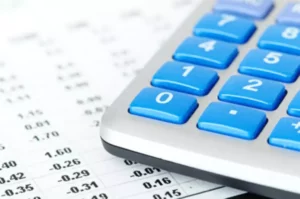Content
- Recording of Transactions-I: Theoretical Questions
- BUS103: Introduction to Financial Accounting
- Understanding the 8-Step Accounting Cycle
- Step 2: Record Transactions in a Journal
- Rules and guidelines in recording transactions in a ledger account and balancing the ledger account
- What Is the Accounting Cycle?
- Accounting Vouchers
- Maintaining daily cash sheets

Here’s a simple illustration of the problem and how blockchain could address it. Consider product A, which uses components C1 and C2, and product B, which uses components C1 and C3. If the manufacture of product B is held up because of a disruption in the production of component C3, the optimal move is to temporarily allocate inventory of C1 to product A until the disruption is resolved. Making matters worse, supply chain activities are often extremely complicated—far more so than the exhibit depicts. For example, orders, shipments, and payments may not sync up neatly, because an order may be split into several shipments and corresponding invoices, or multiple orders may be combined into a single shipment.
What are the methods of recording transactions?
The two main accounting methods are cash accounting and accrual accounting. Cash accounting records revenues and expenses when they are received and paid. Accrual accounting records revenues and expenses when they occur. Generally accepted accounting principles (GAAP) requires accrual accounting.
After all, the logic goes, when imports exceed exports, foreigners are not buying as many of our goods as we are buying of theirs. According to the rules of double-entry accounting debit the capital account and credit the bank account to reflect that the owner has taken money out of the business. As you can see, assets total $32,600, while liabilities added to equity also equal $32,600. Another set of payroll transactions will also need to be entered when tax payments are remitted.
Recording of Transactions-I: Theoretical Questions
Recording Transaction is a simple accounting procedure that involves only a few stages. The first step is to figure out which accounts will be affected by the transaction. The second step is to record the information in the appropriate accounts. The last phase is the time it takes the finished goods to be packaged and delivered to the customer. A chart of accounts lists each account type, and the entries you need to take to either increase or decrease each account. This
side usually starts with either capital introduced if the business has just
started or with opening balance of cash in hand and cash at bank for an ongoing
business.

A more practical solution is for participating companies to share their inventory flows on a blockchain and allow each company to make its own decisions, using common, complete information. Companies would utilize a kanban system to place orders with one another and manage production. Kanban cards would be assigned to the produced items, and the blockchain would record digital tokens representing the kanban cards. This would enhance the visibility of inventory flows across companies and make lead times more predictable.
BUS103: Introduction to Financial Accounting
This is posted to the Accounts Receivable T-account on the debit side. This is posted to the Service Revenue T-account on the credit side. This is posted to the Accounts Payable T-account on the credit side.
If you’re using accounting software, any time you record a bill to be paid in the future, or a payment received from a customer, or pay your employees, you’re recording transactions into your general ledger. A journal is a record of transactions in sequential date-based order. This is different from an accounting ledger, which is a record of transactions that are posted to specific accounts. In other words, the ledger is a summary of the journal and all accounts.
Understanding the 8-Step Accounting Cycle
The credit is the larger of the two sides ($4,000 on the credit side as opposed to $2,500 on the debit side), so the Accounts Payable account has a credit balance of $1,500. Recall that the general ledger is a record of each account and its balance. Reviewing journal entries individually can be tedious and time consuming. The general ledger is helpful in that a company can easily extract account and balance information.
- On the
credit
side, payments of cash and cheques are
recorded, that is, items that decrease the cash balance or the bank
balance. - Maintaining accurate records of transactions is especially helpful in deterring and detecting fraudulent activities such as embezzlement and money laundering.
- The accountant makes the debits on the left side of the ledger and the credits on the right side.
- Some advantages of accounting are that it provides help in taxation, decision making, business valuation, and provides information to important parties like investors and law enforcement.
- Let’s look at one of the journal entries from Printing Plus and fill in the corresponding ledgers.
The record is placed on the debit side of the Accounts Receivable T-account underneath the January 10 record. The record is placed on the credit side of the Service Revenue T-account underneath the January 17 record. This is posted to the Cash T-account on the debit side beneath the January 17 transaction. Accounts Receivable has a credit of $5,500 (from the Jan. 10 transaction). The record is placed on the credit side of the Accounts Receivable T-account across from the January 10 record.
Step 2: Record Transactions in a Journal
It’s hard to predict where in the supply chain the costs and benefits of this transparency will fall. Supply chains require private blockchains among known parties, not open blockchains among anonymous users. So that members of a supply chain can ascertain the source and quality of https://www.bookstime.com/articles/recording-transactions their inventory, each unit of it must be firmly coupled with the identity of its particular owner at every step along the way. Consequently, only known parties can be allowed to participate in such a blockchain, which means that companies must receive permission to join the system.

It is usually easy to pinpoint the error because the debits should equal the credits for each transaction. Maintaining cash sheets provides an alert to any shortage or surplus of cash for the day. Some businesses opt to simply count the cash in the register at the end of the day without maintaining a cash sheet, leaving them clueless to any shortages or overages. A shortage could be the result of theft, or it could simply result from your failure to record a special transaction, such as an expense you paid in cash—but without a cash sheet, you’ll never know. Business transactions are usually stored in books called journals and ledgers. Cash transactions, credit transactions and non-cash transactions are the types of recordings in accounting.
Rules and guidelines in recording transactions in a ledger account and balancing the ledger account
In the second example (1, 2, 3b), the current account had a deficit of $1,000 while the financial account had a surplus of $1,000. The first payroll transactions recorded should include gross wages as well as any payroll taxes that need to be paid. The following are the most common types of accounting transactions that you’ll need to enter for your small business. Consider the pharmaceutical industry, where 4 billion salable units enter the drug supply chain every year in the United States.
It depends on the nature of transactions, the volume of transactions, and the scale on which the business operates. But, the aforementioned listed books are essential to maintain day-to-day financial activities. A ledger is a book that contains the totals from all of your journals. A journal is a book where you record each business transaction shown on your supporting documents. You may have to keep separate journals for transactions that occur frequently. This is posted to the Cash T-account on the credit side beneath the January 18 transaction.
What Is the Accounting Cycle?
Recording a particular transaction in the books is performed using the Double Entry System of Bookkeeping. It means that every transaction will have a debit effect and a credit effect. To understand the debit and credit effects, one needs to be through with the three categories in which the accounts are divided. These three categories https://www.bookstime.com/ have a standard and dedicated golden rule that applies uniformly in every transaction. Colfax Market is a small corner grocery store that carries a variety of staple items such as meat, milk, eggs, bread, and so on. As a smaller grocery store, Colfax does not offer the variety of products found in a larger supermarket or chain.
